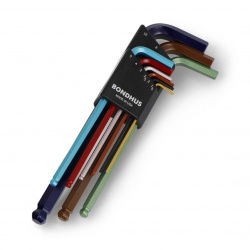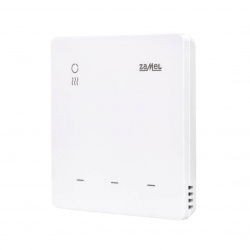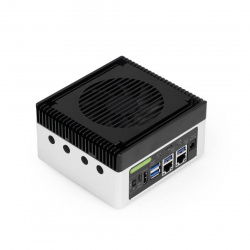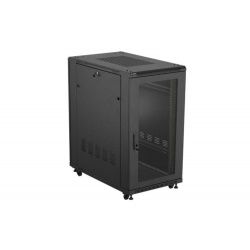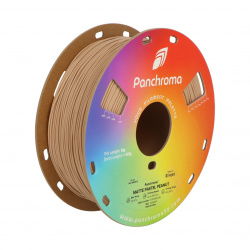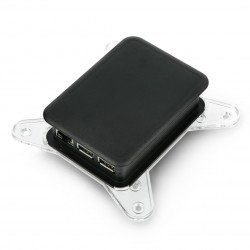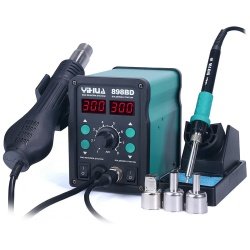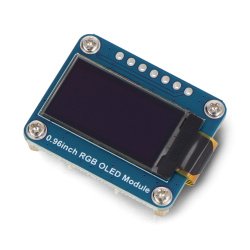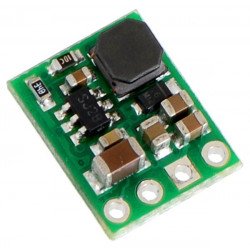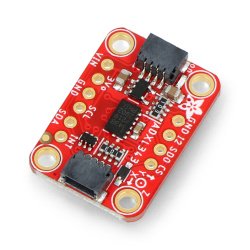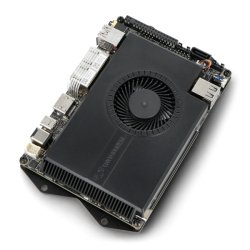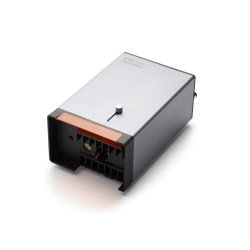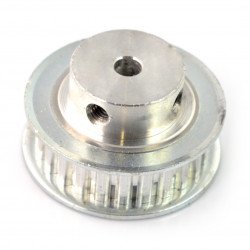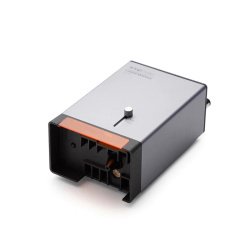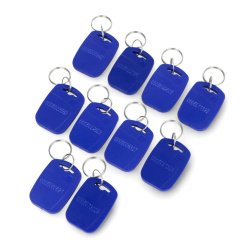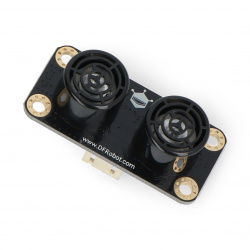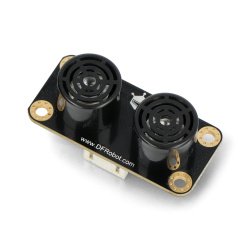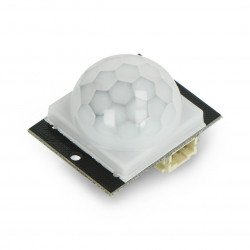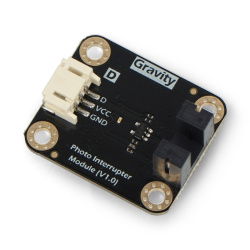Gravity - distance sensors
Gravity URM09 - ultrasonic distance sensor 2-500cm sensor analog - DFRobot SEN0307
Module with ultrasonic distance sensor URM09, with measuring range from 2 cm to 500 cm. Supply voltage is 3.3 V to 5.5 V. The measuring frequency can reach up to 30 Hz. It...Gravity - microwave sensor for motion detection V2.0 - DFRobot SEN0192
The sensor uses the Doppler effect to detect the movement of objects. By using microwaves instead of infrared, it is possible to detect objects reflecting waves in the...DFRobot Gravity - VL53L0X time-of-flight - distance sensor I2C
Digital proximity sensor performs the measurement with the method of time-of-flight. It operates in the range of from 3 to 200 cm with accuracy of +/- 3%. It communicates via...DFRobot Gravity - mini PIR motion detector
Digital PIR motion sensor for Arduino and Raspberry Pi. The module allows you to detect motion in the range of its operation, up to 7 meters. The sensor is powered with the...DFRobot Gravity URM09 - ultrasonic distance sensor 2-500cm and temperature sensor I2C
Module with URM09 ultrasonic sensor and three selectable measurement ranges, from 2 to 150 / 300 / 500 cm. It also allows temperature measurement. The supply voltage is from...Gravity - TRIG URM09 ultrasonic distance sensor - DFRobot SEN0388
Ultrasonic distance measuring module produced by DFRobot with integrated URM09 chip. It detects objects at a distance from 2 cm to 500 cm . The distance is determined...DFRobot Gravity - digital PIR motion sensor
Sensor, type PIR, can detect movement. Used to detect objects in the premises, alarm and lighting systems. The sensor is supplied with the voltage from 3.3 to 5 V. The Gravity...Gravity - Human Presence Detection Sensor - C4001 - mmWave 24GHz sensor - DFRobot SEN0610
Gravity C4001 is a millimeter wave ( 24 GHz ) presence detection sensor with a range of up to 12 meters . It supports the Gravity interface and I2C and UART...Gravity - infrared light photo interrupter module 5mm - ITR9608 - 940nm - DFR1129
The Gravity module with the ITR9608 sensor is a precise solution for object detection, based on interrupting the infrared light beam with a wavelength of 940 nm ....See also
- Gravity - starter kits
- Gravity - base hats
- Gravity - accelerometers and gyroscopes
- Gravity - actuators
- Gravity - gas & dust sensors
- Gravity - medical sensors
- Gravity - current sensors
- Gravity - temperature sensors
- Gravity - force sensors and limit switches
- Gravity - light and colour sensors
- Gravity - LED
- Gravity - encoders and potentiometers
- Gravity - converters
- Gravity - communication modules
- Gravity - sound modules
- Gravity - relays
- Gravity - buttons, keys and joysticks
- Gravity - cables
- Gravity - displays
Measurements based on the Doppler effect
Detection of motion is possible by using one of the fundamental phenomena present in almost all known types of waves. The Doppler effect consists in the change of the wavelength (and thus its frequency) reflected from an object that is in motion with respect to the source of the wave. In other words - the wave sent by a transmitter reaches an obstacle whose surface becomes, in a way, the source of a new wave. If the transmitter and the obstacle are stationary relative to each other, the reflected wave will have the same frequency (and length) as the source wave. The movement of the obstacle in relation to the transmitter (in the direction of propagation) causes decrease or increase of the frequency of the reflected wave - the direction of change is determined by the direction of movement (to/from the transmitter), while its intensity is determined by the speed of movement. What is important, this phenomenon takes place both for electromagnetic waves (radio, light and others) and for acoustic waves (including sound and ultrasound). In order to detect motion it is therefore sufficient to compare in some way the frequency of the wave received by the receiver (located next to the transmitter) with the frequency of the original wave sent by the device. This is how microwave distance sensors, operating in the 10 GHz band, have become increasingly popular in recent years. What is important, they detect both living beings (humans, animals) and inanimate matter (vehicles, moving parts of machines, etc.).
Passive PIR motion detectors
A completely different principle of operation is used for motion detectors based on the detection of infrared radiation emitted by all bodies with a non-zero temperature (zero Kelvin, or so-called absolute zero). PIR sensors consist of a semiconductor structure (containing a simple, several-element array of photodetectors sensitive to infrared radiation in the range of single micrometers), a special plastic lens (usually milk-coloured) and an electronic circuit, responsible for amplifying and processing weak signals from the sensor. If in the field of view (wide thanks to honeycomb lens) moves the object with a temperature different from the background (usually higher), some of the detectors will register a signal with a different amplitude than the rest - so to detect movement it is sufficient to use a system that compares signals from individual detectors (in the simplest case the classical comparator works here).
Gravity sensors in Botland offer
In our offer we have motion and distance sensors, based on electromagnetic waves, ultrasonic and infrared. DFRobot Gravity Microwave sensor v1.0 is perfect for detecting the movement of objects and people (or animals) in a way completely independent of their temperature. The sensor operates with a carrier wave at a frequency lying in the unlicensed band of 10.525 GHz and consumes an average supply current of 2 mA. The width of the observation field is 36 degrees vertically and 72 degrees horizontally. PIR sensors are also noteworthy - the company offers two versions: standard - with PCB size of 38 x 36 mm and miniature - with size of 30 x 22 mm. For applications requiring accurate distance measurement it is worth to use URM09 ultrasonic sensor, offering a wide range from 2 cm to 500 cm and allowing simultaneous temperature measurement from -10 °C to 70 °C.






























































































































































































































































































































